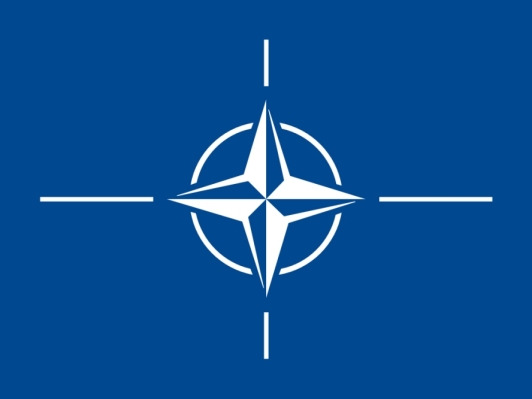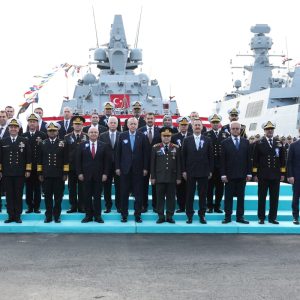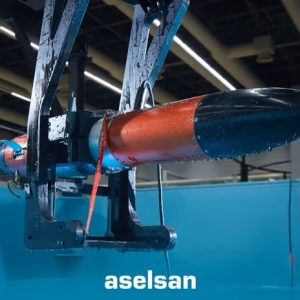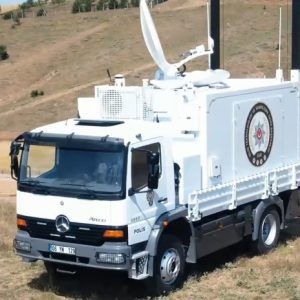NATO has promulgated the first transatlantic NATO Sense and Avoid standard for unmanned aircraft systems (UAS) operating in non‑segregated (civil) airspace, moving AEP‑107 from recommended practice to an implemented allied standard and pairing it with AEP‑107.1 and STANAG/STANREC 4811 to drive Alliance‑wide interoperability [1][2].
Why it matters now
The formalization of the NATO Sense and Avoid standard is more than a paperwork milestone. It establishes minimum functional and performance requirements for on‑board Sense/Detect‑and‑Avoid (S/DAA) systems, defines tailorable acceptable means of compliance, and sets a common basis for certification, operational approvals, and cross‑border recognition [1][2][3]. Practically, this unlocks routine, rules‑based UAS sorties in the same airspace as airliners and general aviation, reducing reliance on segregated corridors.
“AEP‑107 provides minimum functional and performance requirements… and tailorable acceptable means of compliance,” the standard notes, aiming to make Allied UAS as predictably safe as manned traffic in comparable classes of airspace [1][3].
What NATO just published
The package consists of:
- AEP‑107 (Edition B) — the performance‑based system standard for UAS Sense‑and‑Avoid (SAA), specifying certification and installation requirements as well as quantitative performance metrics for intended airspace classes [3].
- AEP‑107.1 (Edition A) — complementary material (implementation/assessment guidance) referenced under the same umbrella [1][2].
- STANAG/STANREC 4811 (Edition 3) — the interoperability agreement capturing NATO‑level recognition of SAA standards and their use across acquisition, airworthiness/certification, and cross‑border approvals [1][4].
NATO is concurrently designing Alliance‑wide means of compliance (MoC) demonstrations and validating common operational approval processes, using the UK’s Protector RG Mk1 (MQ‑9B) as a major demonstration and early adoption platform following its 2025 Military Type Certification for unrestricted operations in UK airspace [5][6][7].
Strategic context: from “segregated” to “routine”
European and North American regulators have progressed civil‑side detect‑and‑avoid frameworks (e.g., FAA/RTCA DO‑365/366; ICAO RPAS guidance), but military adoption often lags due to differing mission risks and sovereign certification chains. By codifying a shared performance baseline, the NATO Sense and Avoid standard aligns military UAS integration with civil expectations while preserving national airworthiness primacy [8][9].
Three outcomes follow:
- Interoperable safety cases. Common definitions of sensor performance, alerting/avoidance timelines, and integrity levels make evidence portable among National Military Airworthiness Authorities.
- Predictable approvals. STANAG 4811 enables nations to specify AEP‑107 compliance in policy and acquisition—simplifying route approvals and cross‑border deployments.
- Industrial momentum. OEMs can design to a stable NATO baseline, lowering non‑recurring certification cost and accelerating fleet fielding across Allied customers.
Inside AEP‑107: what programmes must prove (and how)
AEP‑107 is performance‑based. It requires programmes to:
- Demonstrate detection performance (probability of detection/track, false‑alarm rates, surveillance volume) against cooperative and non‑cooperative traffic for the intended airspace.
- Prove alerting and maneuver guidance timelines that keep Well‑Clear with required risk levels and resolution advisories.
- Validate system integrity and availability (fault‑tolerance, latency budgets, failure‑modes, degraded ops, and crew alerting) commensurate with airspace classes.
- Show installation/aircraft integration compliance—human‑machine interface, autopilot coupling, and failure management (including fallback/contingencies) [3].
Crucially, AEP‑107 defines tailorable acceptable means of compliance (AMC), so authorities can accept different sensor mixes (e.g., cooperative ADS‑B/Mode‑S, active radar, EO/IR) provided the overall safety performance meets the quantitative metrics. That flexibility is essential for maritime, expeditionary, or contested electromagnetic environments.
How this intersects with existing airworthiness rules
NATO airworthiness baselines like STANAG 4671 (USAR) do not prescribe SAA specifics—they recognize SAA as an operational requirement and treat the installed capability as aircraft equipment. AEP‑107 fills that gap with the operational performance yardstick; programmes still need national type certification, but can now argue from a harmonized NATO playbook [10][11].
Early adopter: the UK Protector pathway
The RAF’s Protector RG Mk1 (MQ‑9B) became the first large UAS to receive a UK Military Type Certificate in May 2025, enabling operations without geographic restrictions—including over populated areas—thanks in part to its detect‑and‑avoid architecture designed for unsegregated airspace [5][6][7]. As NATO validates MoC and approval processes, Protector provides a living test case for Alliance‑wide SAA adoption and future cross‑border corridors.
Implementation checklist for programme teams
- Acquisition — specify AEP‑107 Edition B and reference STANAG/STANREC 4811 in procurement to align OEMs on performance and evidence deliverables.
- Certification planning — map your Concept of Operations (CONOPS) to AEP‑107 performance metrics; select AMC combinations (e.g., cooperative surveillance + active sensor) suited to your airspace and mission.
- Human factors & HMI — implement alert prioritization, resolution advisories, and crew workload controls consistent with AEP‑107 guidance.
- Cross‑border ops — build approval packages around the STANAG 4811 pathways to speed recognition in host nations and NATO exercises.
Key takeaway: Treat AEP‑107 as the quantitative backbone of your safety case; treat STANAG 4811 as the political/administrative bridge for Allied acceptance.
Market and industry implications
For primes and SMEs, the NATO Sense and Avoid standard reduces certification variance across customers. It incentivizes modular SAA payloads and software‑defined sensor fusion that can be tuned to different airspace risk models. Insurers, air navigation service providers, and airports gain confidence from uniform Well‑Clear logic, enabling service contracts that include UAS in mixed traffic.
Looking ahead, alignment with civil detect‑and‑avoid evolutions (e.g., updates to DO‑365/366 or ICAO SARPs) and counter‑UAS doctrine will matter. NATO’s standard provides the UAS‑side baseline; layered C‑UAS tactics and spectrum management complete the picture for safe mixed‑domain skies [8][9].
Internal perspective and related reading
For a broader operational view on UAS integration pressures, see our analysis on UAV swarms vs SHORAD—a complementary angle on how airspace complexity drives both SAA and C‑UAS innovation. [Internal link → https://defenceagenda.com/uav-swarms-vs-shorad/]
Key Facts
- What: AEP‑107 Ed. B / AEP‑107.1 Ed. A + STANAG/STANREC 4811 Ed. 3 formalize NATO’s UAS Sense‑and‑Avoid baseline.
- Why: To enable routine UAS operations in non‑segregated civil airspace with interoperable safety cases.
- How: Performance‑based requirements with tailorable acceptable means of compliance; Alliance‑wide operational approval processes.
- Who: NATO JCGUAS with validation by military and civil authorities; early adoption via RAF’s Protector RG Mk1 (MQ‑9B).
References
- UAS Vision — “NATO publishes new sense‑and‑avoid standard for UAS in unsegregated airspace,” 1 Sep 2025. Link
- Unmanned Airspace — “NATO publishes new sense‑and‑avoid standard for UAS in unsegregated airspace.” Link
- GlobalSpec — AEP‑107: Sense and Avoid System Performance‑Based Standard. Link
- DLA ASSIST QuickSearch — STANREC 4811 (AEP‑101 & AEP‑107). Link
- RAF — Protector RG Mk1 overview. Link
- The Aviationist — “Protector RG1 completes UK certification enabling flights outside of restricted airspace,” 9 May 2025. Link
- Defense News — “General Atomics touts UK breakthrough in drone airspace integration,” 9 May 2025. Link
- FAA — UAS Sense and Avoid System Certification Obstacles (overview of civil‑side standards/DO‑365 context). Link
- ICAO — Circular 328: Unmanned Aircraft Systems (RPAS). Link
- STANAG 4671 — NATO Airworthiness Requirements for UAS (USAR), context for SAA as installed equipment. Link
- Airforce‑Technology — “NATO determines landmark autonomous sense‑and‑avoid standard,” Oct 2023. Link











